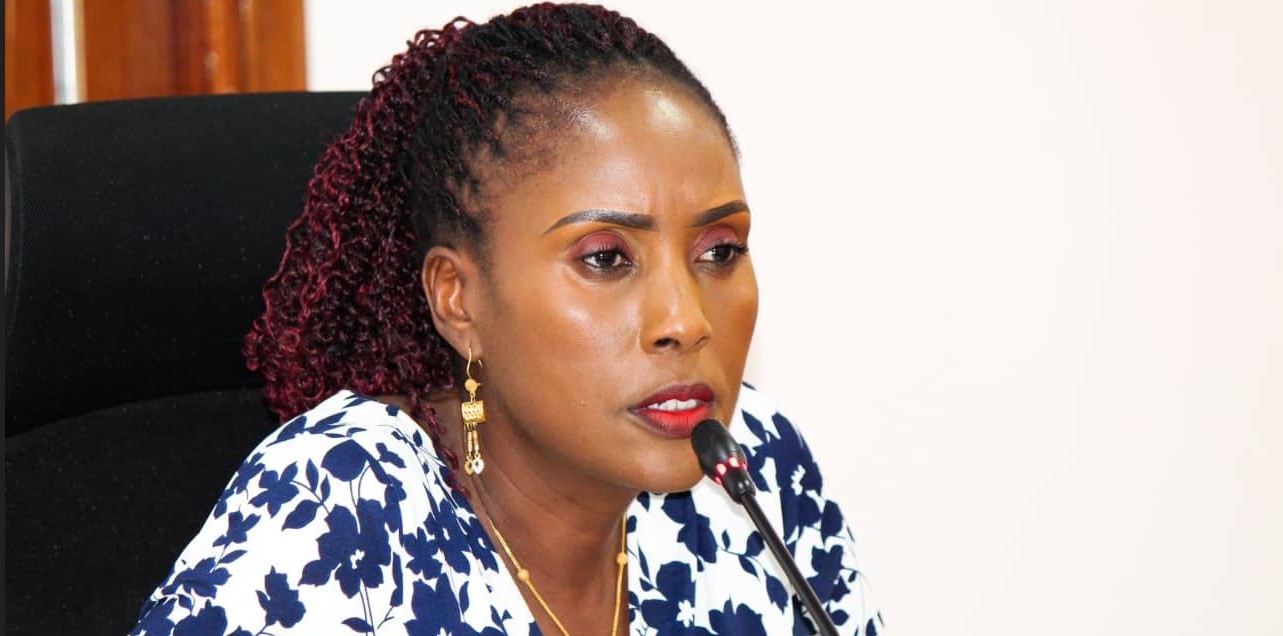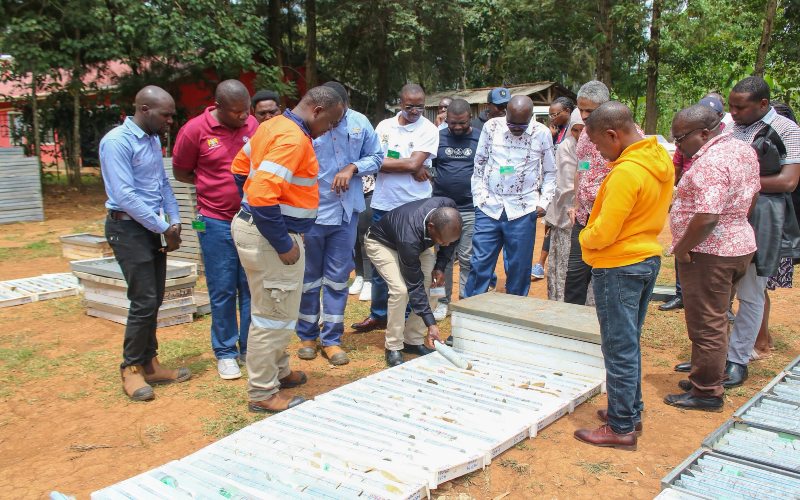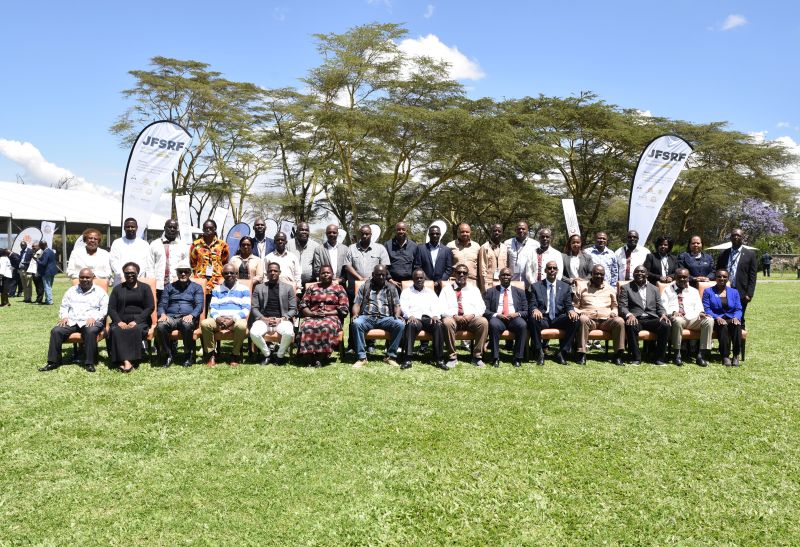Gender CS Cheptumo calls for collective action against teenage pregnancies

Gender Cabinet Secretary Hannah Cheptumo told the Senators that preventing teenage pregnancies requires early education, awareness of biological processes, and active engagement from all Kenyans.
The government is calling on families, communities, and the government to work together in protecting children and reducing teenage pregnancies, emphasising that safeguarding their well-being is a shared duty.
Appearing before the Senate plenary on Wednesday, Gender Cabinet Secretary Hannah Cheptumo told the Senators that preventing teenage pregnancies requires early education, awareness of biological processes, and active engagement from all Kenyans.
More To Read
- Senator Hamida demands action over child sex trafficking in Maai Mahiu
- Culture of silence fuels online abuse against women in Kenya - report
- Digital platforms fuel sexual exploitation of women in Kenya - report
- Teenage pregnancy key driver of preterm births in Africa, studies show
- Beyond the numbers: Why Kenya’s teenage pregnancy crisis demands new conversations
- Beyond birth: The silent struggles of teenage mothers
“Under the niche supported by the government of Kenya, and World Bank and other partners. We still need more funds, because this is a societal problem, and we must be able to all address this particular problem,” Cheptumo said.
She stressed that the responsibility does not rest solely with the State Department for Children Services, urging families and communities to guide children, especially during school holidays, to prevent them from falling victim to early pregnancies.
Data from the Kenya National Bureau of Statistics (KNBS) highlights that teenage pregnancies are highest in Nairobi City, Bungoma, Kakamega, and Narok counties.
In 2024, Nairobi City, Bungoma, and Kakamega contributed 4.2 to 6.2 per cent of adolescent pregnancies, while Narok recorded between 2.8 and 4.1 per cent.
Overall, the number of adolescents aged 10-19 presenting with pregnancy at first antenatal care (ANC) visits fell by 1.9 per cent to 253,300, with younger adolescents (10-14 years) dropping by 9.5 per cent to 11,831 and those aged 15-19 years declining by 1.5 per cent to 241,483.
The 2025 survey showed further progress, with total adolescent pregnancies at first ANC visits decreasing by 4.8 per cent to 241,228.
Despite improvements, Nairobi City (6.1 per cent), Kakamega (4.8 per cent), Narok (4.4 per cent), and Bungoma (4.4 per cent) remain the highest contributors.
The Gender CS further outlined a series of reforms aimed at addressing years of underfunding that have limited the State Department for Children’s Services.
She, however, acknowledged that restricted resources have hindered the department’s ability to fully protect and promote the welfare of children across the country.
The CS told senators that the ministry has adopted a multi-front strategy to secure higher budget allocations and ensure that financing for child protection is included in national planning and resource mobilisation frameworks.
“The Ministry of Gender, Culture and Children’s Services acknowledges the long-standing challenge of underfunding facing the State Department for Children’s Services, which has historically limited its ability to discharge its mandate,” Cheptumo said.
The Cabinet Secretary said the ministry has been engaging the National Treasury and other relevant bodies to improve funding and ensure the timely disbursement of funds. She noted that her ministry has already rolled out several financial and operational reforms to improve efficiency and accountability.
Among the key measures, the ministry has adopted strict adherence to the Public Finance Management Act of 2012 and the Public Procurement and Disposal Act of 2005, alongside its 2020 regulations, to eliminate delays and enhance efficiency.
Cheptumo said these reforms include timely approval of work plans, procurement plans, and cash flow plans for the 2025/2026 financial year.
She added that requests for funds from the National Treasury and approvals of departmental activities are now being closely monitored to avoid unnecessary delays.
“Delays in approvals are tracked and reported to the Principal Secretary for action,” she told the Senate committee.
To streamline expenditure, the ministry has empowered accounting officers and departmental heads with the authority to approve payments within their limits, reducing bureaucratic bottlenecks.
Cheptumo further revealed that the ministry has enlisted engineers and quantity surveyors from the State Department for Public Works to help in preparing accurate bills of quantities for capital projects.
The Cabinet Secretary also highlighted the Victim Protection Fund as a key element in supporting victims of crime and abuse of power. Established under the Victims Protection Act of 2014, the fund provides legal, social, and financial support to victims.
“The Ministry of Gender, Culture and Children’s Services also has responsibility over child victims, who are the most vulnerable and should be accorded priority treatment under the Children’s Act,” she said.
Responding to a question on the number and distribution of children’s officers across the country, Cheptumo said there were 714 officers deployed as of June 2025, serving all 47 counties, 290 constituencies, and 353 operational sub-county offices.
These officers, she said, cater to more than 18 million children nationwide.
Cheptumo acknowledged that despite the progress made, the ministry continues to face staffing challenges, with some officers still required to serve multiple counties simultaneously.
She assured the Senate that efforts are underway to address the gaps through additional recruitment and better resource allocation.
Top Stories Today













































